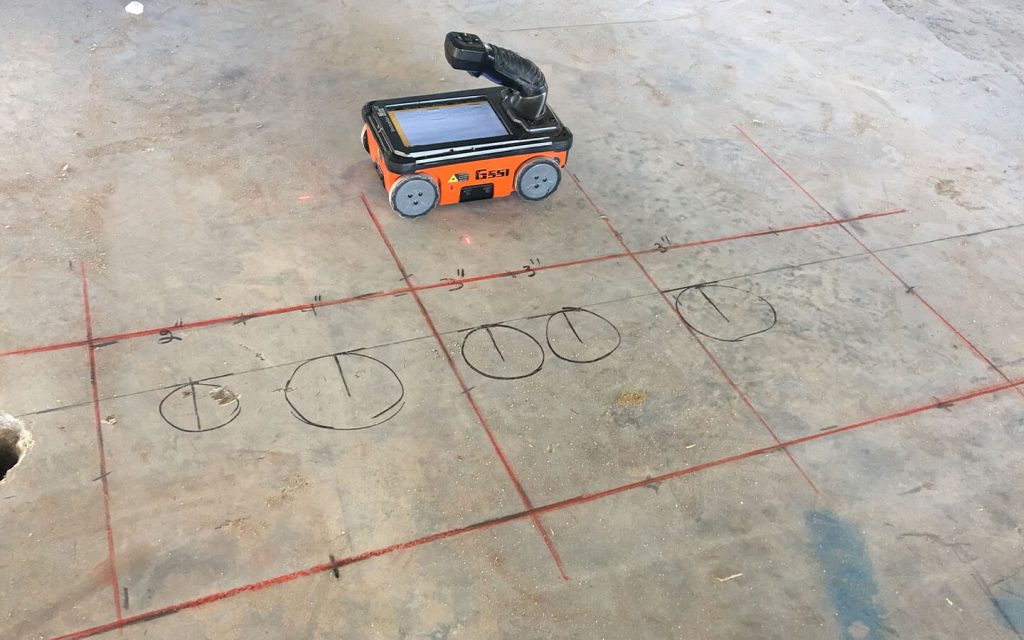Introduce the Transformative Power of Concrete Scanning in Optimizing Efficiency and Security
Concrete scanning has actually emerged as a crucial device in the building and construction sector, using unparalleled benefits in improving task efficiency and guaranteeing safety criteria. The transformative power of concrete scanning lies in its capacity to offer real-time information and in-depth understandings, changing exactly how jobs are intended and performed.
Relevance of Concrete Scanning
Ensuring the structural integrity and safety and security of building projects begins with the crucial step of performing complete concrete scanning. Concrete scanning is a non-destructive approach used to spot and map subsurface aspects within concrete frameworks. This process is essential in identifying possible threats, such as rebar, post-tension wires, and avenues, that might be concealed within the concrete. By utilizing innovative technologies like ground-penetrating radar (GPR) and electro-magnetic induction, building and construction groups can accurately find these elements without creating any type of damages to the structure.
The value of concrete scanning can not be overstated, as it plays an important duty in preventing accidents, reducing task delays, and making sure the long-term sturdiness of the building and construction. By recognizing potential hazards prior to the building phase starts, building contractors can apply ideal safety actions and make notified choices relating to the layout and implementation of the job. Additionally, concrete scanning assists in enhancing job timelines and budget by staying clear of unanticipated prices and delays that might emerge as a result of unanticipated blockages within the concrete. Eventually, buying thorough concrete scanning is a positive method that boosts both effectiveness and safety in building and construction projects.
Exactly How Concrete Scanning Functions
Concrete scanning operates as a vital device in construction jobs by using sophisticated innovations to find and map subsurface components without causing structural damages. Ground Passing Through Radar (GPR) and Electromagnetic Induction (EMI) are two key techniques made use of in concrete scanning.
Throughout the scanning process, the data accumulated is examined in real-time, allowing immediate identification of prospective threats or challenges beneath the surface area. This details aids in decision-making, ensuring that building activities proceed safely and successfully. In addition, 3D imaging software program can be made use of to develop thorough maps of the subsurface aspects, even more boosting job planning and execution. By employing these sophisticated modern technologies, concrete scanning considerably lowers the risk of pricey problems and injuries on building sites.
Benefits of Concrete Scanning
One of the primary advantages of concrete scanning is the capability to identify and situate ingrained objects such as rebar, post-tension cable televisions, and avenues precisely. Concrete scanning assists in planning and making much more efficiently, as it provides specific information regarding the area and deepness of architectural components.

Case Research Studies: Concrete Scanning Success

In an additional instance, a building business used 3D concrete scanning to assess the condition old concrete structures in a historical building. The detailed scans offered beneficial insights into the extent of deterioration and aided focus on maintenance efforts properly. By proactively dealing with locations of problem identified through scanning, the firm was able to expand the life expectancy of the structure and make certain resident safety and security.
These instance research studies underscore the transformative power of concrete scanning in enhancing effectiveness, accuracy, and safety and security in building and construction projects.
Applying Concrete Scanning in Projects
Executing innovative scanning modern technologies throughout building projects has actually come to be increasingly necessary for enhancing accuracy and safety. By incorporating concrete scanning right into task preparation and execution, construction teams can identify potential risks, such as rebar or post-tension wires, hidden within concrete structures. This proactive method reduces the risk of mishaps, delays, and expensive rework, inevitably causing more efficient task timelines and spending plans.
To execute concrete scanning properly, project managers should team up carefully with seasoned scanning professionals to determine the most ideal scanning methods for the specific task demands. Involving scanning professionals from the very early stages of a job enables the group to develop detailed scanning plans that resolve essential locations of worry and make certain thorough information collection.
In addition, including concrete scanning into regular job operations can streamline decision-making processes, as real-time check information gives immediate understandings into the condition of concrete structures - Concrete Scanning. This data-driven approach promotes notified analytical and makes it possible for groups to make modifications without delay, promoting a society of effectiveness and safety throughout the task lifecycle

Verdict
Finally, concrete scanning plays a critical role in enhancing effectiveness and safety in building and construction projects. By using advanced check here technology to find and map out underlying structures within concrete, this process aids to stop expensive mistakes, guarantee structural stability, and minimize risks on website. With the capacity to uncover covert elements and offer accurate data, concrete scanning proves to be a useful tool for optimizing project outcomes and making best use of general success.
Concrete scanning is a non-destructive method made use of to find and map subsurface elements within concrete structures. In addition, concrete scanning aids in optimizing job timelines and budget by preventing unanticipated expenses and hold-ups that might occur due to unexpected blockages within the concrete. One notable case research entails a large-scale restoration project where concrete scanning played a vital role in making certain task success.In another case, a building company made use of 3D concrete scanning to evaluate the condition of maturing concrete frameworks in a historic structure. By incorporating concrete scanning into project planning and implementation, building and construction teams can recognize prospective threats, such as rebar or post-tension cords, hidden within concrete structures.
Comments on “Picking the Right Concrete Scanning Equipment”